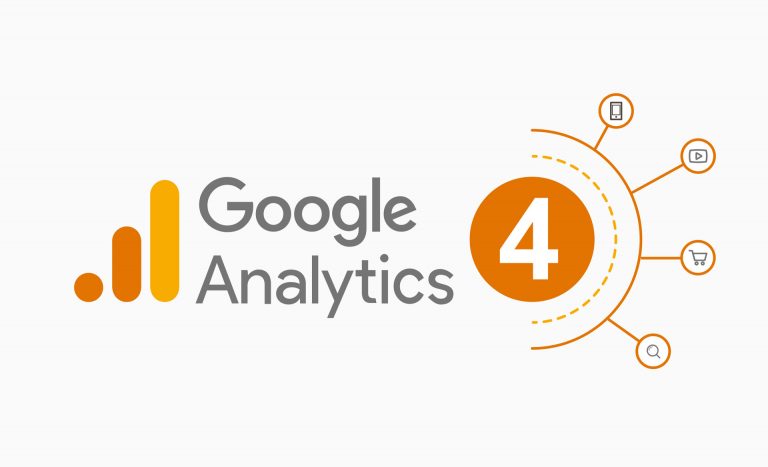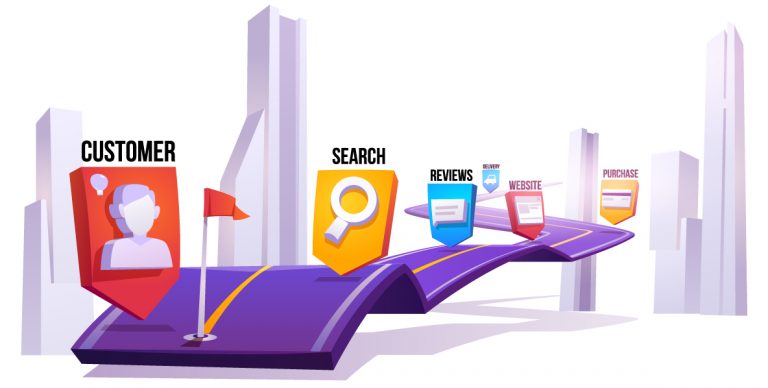What is Digital Marketing
Any marketing that uses electronic devices and can be used by marketing experts to send promotional messages and measure its impact through your customer journey. In simple language, digital marketing usually refers to marketing campaigns that appear on a computer, phone, tablet or other device. This can take many forms, including online video, display ads, search engine marketing, paid social ads and social media posts. Digital marketing is often compared to “traditional marketing” such as magazine advertising, billboards and direct mail. Don’t know why, television is usually combined with traditional advertising.
Definition of Digital Marketing
Digital marketing, also known as online marketing, is the promotion of a brand using the Internet and other forms of digital communication to connect with potential customers. This includes not only e-mail, social media and web-based advertising, but also text and multimedia messages as marketing channels. Essentially, if a marketing campaign involves digital communication, it is digital marketing.
Content Marketing
Content marketing is a major factor in SEO. Which is a strategy based on the delivery of relevant and valuable content to the target audience.
As in any marketing strategy. The goal of content marketing is to attract people who eventually convert into customers. But it works very differently than traditional advertising. Rather than enticing prospects with potential value from a product or service, it provides value for free in the form of written material.
As effective as content marketing is, it can also be difficult. Content marketing writers must be able to rank high in search engine results, as well as engage the people who will read the content, share it, and further interact with the brand. When content is relevant, it can establish strong relationships.
As in any marketing strategy. The goal of content marketing is to attract people who eventually convert into customers. But it works very differently than traditional advertising. Rather than enticing prospects with potential value from a product or service, it provides value for free in the form of written material.
As effective as content marketing is, it can also be difficult. Content marketing writers must be able to rank high in search engine results, as well as engage the people who will read the content, share it, and further interact with the brand. When content is relevant, it can establish strong relationships.
Search Engine Optimisation
Search Engine Optimization, or SEO, is technically a marketing tool, not a form of marketing in itself. The rest defines it as “the art and science of making web pages attractive to search engines”.
The “art and science” part of SEO is the most important. SEO is a science because it requires you to research and weigh the various contributing factors to get the highest possible ranking. Today, the most important elements to consider when optimizing a web page include:
• Quality of content
• Level of user engagement
• Mobile-friendliness
• Number and quality of inbound links
The strategic use of these factors makes SEO a science, but the uncertainty involved makes it an art.
In SEO, there is no quantitative rubric or consistent rule for ranking high. Google changes its algorithms almost constantly, so it is impossible to make accurate predictions. You can closely monitor the performance of your page and make adjustments accordingly.
The “art and science” part of SEO is the most important. SEO is a science because it requires you to research and weigh the various contributing factors to get the highest possible ranking. Today, the most important elements to consider when optimizing a web page include:
• Quality of content
• Level of user engagement
• Mobile-friendliness
• Number and quality of inbound links
The strategic use of these factors makes SEO a science, but the uncertainty involved makes it an art.
In SEO, there is no quantitative rubric or consistent rule for ranking high. Google changes its algorithms almost constantly, so it is impossible to make accurate predictions. You can closely monitor the performance of your page and make adjustments accordingly.
Pay-Per-Click Marketing
Posting an advertisement on any one platform, then when a user clicks on that advertisement, then it is called PPC to pay for every click. The full form of PPC is Pay-per-click.
How and when people see your ad is a little more complicated. When a position is available on the search engine result page, also known as the SERP, the engine essentially fills that space with an instant auction. An algorithm prioritizes each available ad based on several factors, including:
• Ad quality
• Keyword relevance
• Landing page quality
• Bid amount
Each PPC campaign consists of 1 or more targeted actions that the audience has to complete once they click on an ad. These operations are known as conversions, and they can be transactional or non-transactional. Making a purchase is a conversion, but so is a newsletter signup or a call made to your home office.
Whatever you choose as your targeted conversions, you can track them through your chosen platform to see how your campaign is performing.
How and when people see your ad is a little more complicated. When a position is available on the search engine result page, also known as the SERP, the engine essentially fills that space with an instant auction. An algorithm prioritizes each available ad based on several factors, including:
• Ad quality
• Keyword relevance
• Landing page quality
• Bid amount
Each PPC campaign consists of 1 or more targeted actions that the audience has to complete once they click on an ad. These operations are known as conversions, and they can be transactional or non-transactional. Making a purchase is a conversion, but so is a newsletter signup or a call made to your home office.
Whatever you choose as your targeted conversions, you can track them through your chosen platform to see how your campaign is performing.
Affiliate Marketing
Affiliate Marketing lets someone earn money by promoting another person’s business. You can either be a promoter or a business that works with a promoter, but the process is the same in both the cases.
It works by using revenue sharing model. If you are an affiliate, you get a commission every time someone buys an item you promote. If you are a merchant, you pay the affiliate for every sale they help you with.
Some affiliate marketers choose to review only 1 company’s products, perhaps on a blog or other third-party site. Others have relationships with multiple traders.
Whether you want to become an affiliate or find one, the first step is to build a relationship with the other party. You can use a platform designed to connect the affiliate to the retailer, or you can start or join a single-retailer program.
If you are a retailer and you choose to work with an affiliate directly, there are several things you can do to make your program attractive to potential promotors. You have to provide those associates with the tools they need to be successful. This includes incentives for great results as well as marketing support and pre-made material.
It works by using revenue sharing model. If you are an affiliate, you get a commission every time someone buys an item you promote. If you are a merchant, you pay the affiliate for every sale they help you with.
Some affiliate marketers choose to review only 1 company’s products, perhaps on a blog or other third-party site. Others have relationships with multiple traders.
Whether you want to become an affiliate or find one, the first step is to build a relationship with the other party. You can use a platform designed to connect the affiliate to the retailer, or you can start or join a single-retailer program.
If you are a retailer and you choose to work with an affiliate directly, there are several things you can do to make your program attractive to potential promotors. You have to provide those associates with the tools they need to be successful. This includes incentives for great results as well as marketing support and pre-made material.
Email Marketing
The concept of email marketing is simple – you send a promotional message and hope that your prospect will click on it. However, the implementation is much more complex. First, you need to make sure that your emails are as desired. That means one that does the following:
• Individualizes the content, both in the body and in the subject line
• States clearly what kind of emails the subscriber will get
• Offers a clear unsubscribe option
• Integrates both transactional and promotional emails
You want your customers to see your campaign as an important service, not just a promotional tool.
Email marketing is a proven, effective technology in itself: 89% of professionals surveyed have named it as their most effective lead generator.
It can be even better if you incorporate other technologies like marketing automation, which allows you to segment and schedule your emails so that they can more effectively meet the needs of your customers.
• Individualizes the content, both in the body and in the subject line
• States clearly what kind of emails the subscriber will get
• Offers a clear unsubscribe option
• Integrates both transactional and promotional emails
You want your customers to see your campaign as an important service, not just a promotional tool.
Email marketing is a proven, effective technology in itself: 89% of professionals surveyed have named it as their most effective lead generator.
It can be even better if you incorporate other technologies like marketing automation, which allows you to segment and schedule your emails so that they can more effectively meet the needs of your customers.
Social Media Marketing
Social media marketing means increasing traffic and brand awareness by engaging people in online discussions. The most popular platforms for social media marketing are Facebook, Twitter and Instagram, with LinkedIn and YouTube not far behind.
Since social media marketing involves active audience participation, it has become a popular way to gain attention. It is the most popular content medium for B2C marketers at 96%, and is making a mark in the B2B space as well. According to the Content Marketing Institute, 61% of B2B content marketers increased their use of social media this year.
Social media marketing provides built-in engagement metrics, which are extremely useful to help you understand how well you are reaching your audience. You get to decide what types of interactions matter most to you, whether it means the number of shares, comments, or total clicks on your website.
Direct purchases may not even be the goal of your social media marketing strategy. Many brands use social media marketing to initiate a dialogue with the audience instead of encouraging them to spend the money right away. This is especially common in brands that target an older audience or offer products and services that are not suitable for impulsive shopping. It all depends on the goals of your company.
Since social media marketing involves active audience participation, it has become a popular way to gain attention. It is the most popular content medium for B2C marketers at 96%, and is making a mark in the B2B space as well. According to the Content Marketing Institute, 61% of B2B content marketers increased their use of social media this year.
Social media marketing provides built-in engagement metrics, which are extremely useful to help you understand how well you are reaching your audience. You get to decide what types of interactions matter most to you, whether it means the number of shares, comments, or total clicks on your website.
Direct purchases may not even be the goal of your social media marketing strategy. Many brands use social media marketing to initiate a dialogue with the audience instead of encouraging them to spend the money right away. This is especially common in brands that target an older audience or offer products and services that are not suitable for impulsive shopping. It all depends on the goals of your company.
For more courses please visit www.expertcomputerclass.com







